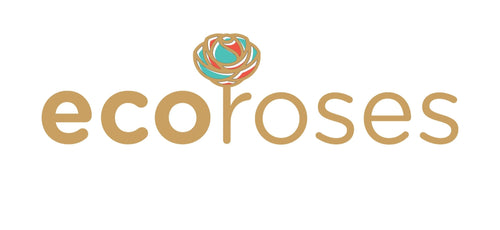Color is the heartbeat of any floral design. Whether you're planning your dream wedding or refreshing your interior space, choosing the right floral color palette can elevate the entire atmosphere. Flowers speak in colors-each hue telling a unique story, evoking emotions, and setting moods. When combined thoughtfully, they create seamless harmony that complements your vision.
If you're looking to explore a curated collection of flowers that fit perfectly into diverse color schemes, check out this exquisite selection of floral designs here.
In this comprehensive guide, we'll dive deep into the art and science of floral color palettes for weddings and interiors, covering:
-
The basics of color theory in floral design
-
Popular wedding floral palettes and their meanings
-
Interior floral palettes that enhance mood and style
-
Tips for combining colors like a pro
-
Seasonal flower color ideas
-
How to use floral color palettes to tell your story
Understanding Color Theory in Floral Design
Before we dive into specific palettes, it’s helpful to understand the fundamentals of color theory as it applies to flowers.
Primary, Secondary, and Tertiary Colors
-
Primary colors: Red, blue, yellow - these are the base colors from which others are made.
-
Secondary colors: Orange, green, purple - created by mixing primary colors.
-
Tertiary colors: Combinations of primary and secondary hues (e.g., red-orange).
Color Harmonies
-
Monochromatic: Different shades and tints of one color (e.g., blush to deep rose).
-
Analogous: Colors next to each other on the color wheel (e.g., pink, peach, coral).
-
Complementary: Colors opposite on the wheel (e.g., purple and yellow), creating bold contrast.
-
Triadic: Three colors evenly spaced (e.g., red, blue, yellow) for vibrant balance.
Emotional Impact of Colors
-
Red: Passion, love, energy
-
Pink: Romance, gentleness, sweetness
-
White: Purity, peace, simplicity
-
Yellow: Joy, friendship, optimism
-
Blue: Calm, trust, serenity
-
Purple: Luxury, creativity, mystery
-
Green: Growth, renewal, harmony
Wedding Floral Color Palettes: Setting the Mood for Your Big Day
Your wedding flowers set the tone for your celebration and reflect your personal style. Let’s explore popular palettes and what they communicate.
1. Classic White and Green
Timeless and elegant, white flowers paired with lush green foliage create a clean, fresh look. Perfect for traditional weddings and minimalist themes.
Popular flowers: White roses, lilies, gardenias, eucalyptus.
Why it works: White symbolizes purity and new beginnings; green adds natural vibrance.
2. Blush, Peach, and Cream
Soft, romantic, and feminine-this palette is a favorite for spring and summer weddings.
Popular flowers: Peonies, ranunculus, garden roses, dahlias.
Why it works: These muted pastels bring warmth and a vintage vibe.
3. Bold Reds and Burgundy
Dramatic and passionate, red tones convey love and intensity, ideal for autumn or winter weddings.
Popular flowers: Red roses, dahlias, calla lilies.
Why it works: Deep reds pair beautifully with gold accents for a regal feel.
4. Lavender, Mauve, and Dusty Blue
Soft purples and blues evoke calmness and creativity, great for boho or rustic weddings.
Popular flowers: Lavender, hydrangea, delphinium.
Why it works: This palette feels both whimsical and sophisticated.
5. Sunshine Yellow and Orange
Bright and cheerful, this vibrant combo is perfect for summer or outdoor weddings.
Popular flowers: Sunflowers, marigolds, tulips.
Why it works: These hues symbolize happiness and energy, brightening any venue.
Floral Color Palettes for Interiors: Enhancing Your Living Space
Flowers bring natural beauty and a mood boost inside the home. Here are palettes tailored to different interior aesthetics.
1. Neutral Elegance: Whites, Creams, and Soft Greens
Ideal for modern, Scandinavian, or minimalist spaces, this palette promotes tranquility.
Flower suggestions: White orchids, calla lilies, eucalyptus, dusty miller.
2. Warm and Cozy: Terracotta, Rust, and Deep Burgundy
Perfect for bohemian or rustic interiors, these warm tones create inviting spaces.
Flower suggestions: Protea, dahlias, autumn leaves, celosia.
3. Fresh and Energizing: Bright Yellow, Green, and Coral
Great for kitchens or living rooms where energy and positivity are desired.
Flower suggestions: Gerbera daisies, tulips, zinnias.
4. Cool Calm: Blues, Purples, and Lavenders
Ideal for bedrooms and bathrooms to foster relaxation.
Flower suggestions: Hydrangeas, lavender, delphiniums.
5. Bold and Artistic: Mixed Jewel Tones
Use sparingly in eclectic or maximalist homes to create striking focal points.
Flower suggestions: Orchids, roses, anthuriums in deep purples, reds, and emeralds.
Tips for Combining Floral Colors Like a Pro
-
Balance is key: Pair bold hues with neutrals.
-
Think about texture: Mix soft petals with spiky or leafy elements.
-
Match to your venue or room: Consider wall colors, furniture, and lighting.
-
Seasonal flowers: Align your palette with what’s available naturally for freshness and cost-effectiveness.
-
Use your flowers’ natural color gradation: Blend from light to dark tones of the same color.
Seasonal Flower Color Ideas
Spring, summer, fall, and winter offer unique color inspirations:
-
Spring: Pastels and fresh greens (tulips, daffodils)
-
Summer: Bold and bright (sunflowers, dahlias)
-
Fall: Earthy tones and burnt oranges (chrysanthemums, marigolds)
-
Winter: Whites and deep reds (amaryllis, poinsettias)
How Floral Color Palettes Tell Your Story
Whether it’s a wedding or home decor, your choice of colors can express who you are:
-
Soft pastels for romantic, vintage-loving souls
-
Vibrant brights for energetic, joyful personalities
-
Monochromes for lovers of simplicity and calm
-
Deep jewel tones for dramatic and artistic spirits
Conclusion
Floral color palettes are powerful tools in creating ambiance, telling stories, and enhancing experiences. By understanding color theory and seasonal options, you can select the perfect blooms for your wedding or interiors.
For a curated selection of exquisite flowers that can bring your palette to life, visit here.


